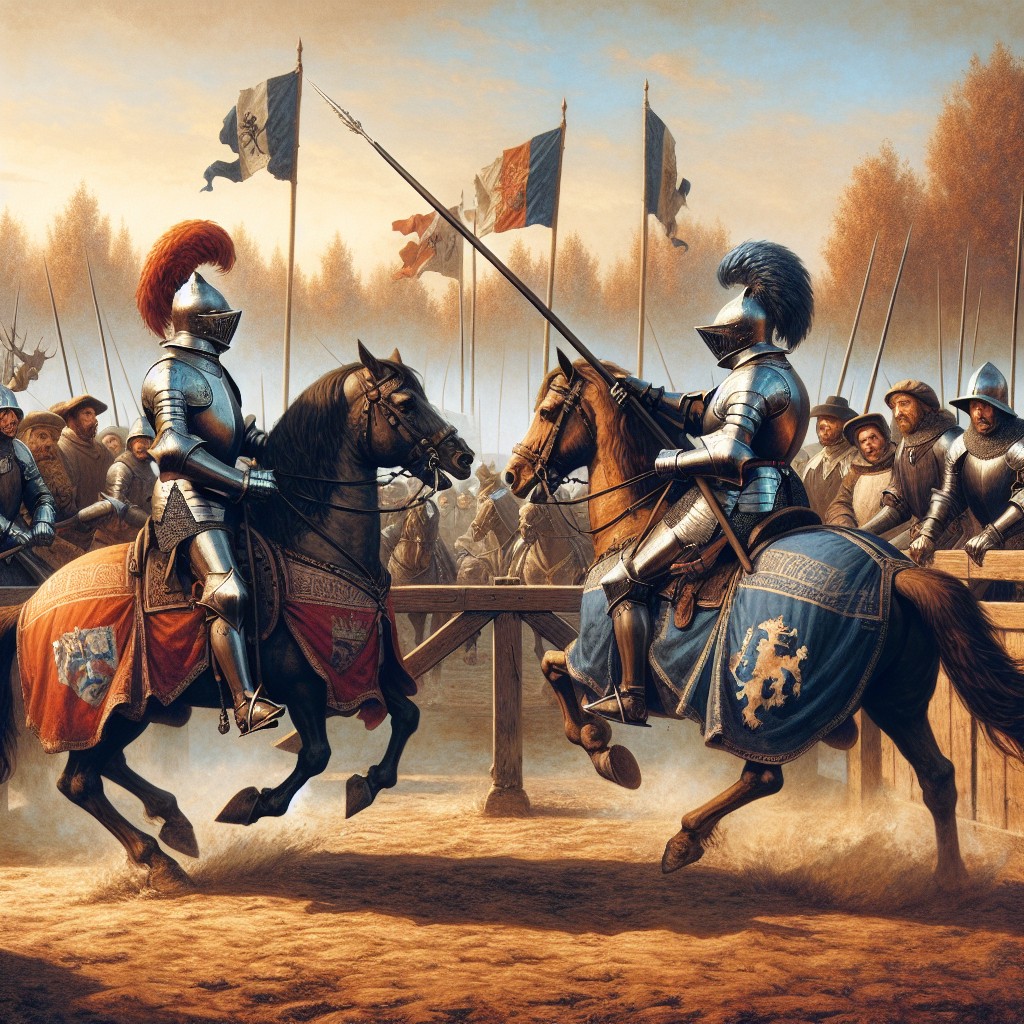The young lion that kills the old one
The prophetic death of Henry II of France

The Earl of Montgomery duels King Henry II - AI generated image
On a warm summer day, June 29, 1559, Henry II Valois of France (1519–1559) prepared to don his regal armor, adorned with golden lions that gleamed in the sun yet burned hot to the touch. He was ready to mount his steed and engage in the jousting tournament, a medieval knightly practice involving a gallop toward one’s opponent with ashwood lances, aiming to unseat the rival. The tournament, organized to celebrate the Peace of Cateau-Cambrésis and the marriage of the Duke of Savoy to the king’s daughter, Elisabeth, took place under beautiful weather. Yet, despite the festive air, an ominous tension loomed.
Before mounting his horse, ironically named "Misfortune," King Henry II was stopped by his squire, who begged him not to participate, fearing for his safety. Although he was over 40, the king remained fit, determined, and resolute, unwilling to heed the warning. The squire's concern stemmed from a dark prophecy by a Provençal seer, a Jewish man with a Latin pseudonym: Nostradamus. In a cryptic quatrain, Nostradamus had indirectly warned the king’s wife, Catherine de’ Medici, that:
"The young lion will overcome the older one,
In a field of war in single combat,
He will pierce his eyes within a golden cage,
Two wounds in one, and a cruel death."
The prophecy foretold that a younger knight would fatally wound an older one with a blow to the eye during a duel. Adding to the foreboding, one of Catherine’s astrologers had also advised the queen, after an ominous dream in which she envisioned the king dying, that Henry should avoid any dueling past the age of 40. Yet all these warnings went unheeded.
Henry entered the tournament with impressive skill, winning the first three duels and easing Catherine's anxieties. However, the fourth match, against the young Gabriel I, Count of Montgomery (1530–1574), ended in a draw. Determined to emerge victorious, the king insisted on a final duel against Montgomery.
Tragically, during this last encounter, Montgomery’s lance failed to shatter and struck directly through the king’s helmet, piercing his eye. True to the prophecy, Henry II succumbed to his injuries nine days later, dying a cruel and untimely death.
Corrado Vivanti, Le guerre di religione nel Cinquecento, Laterza, 2011
Carlo Capra, Storia Moderna 1492-1848, quarta edizione, Le Monnier, 2021
2025-07-23
Salvatore Ciccarello
